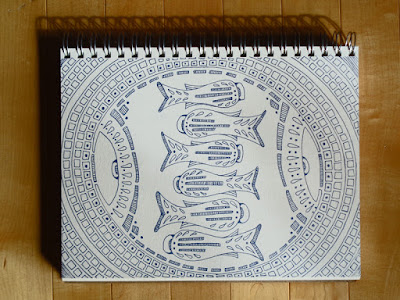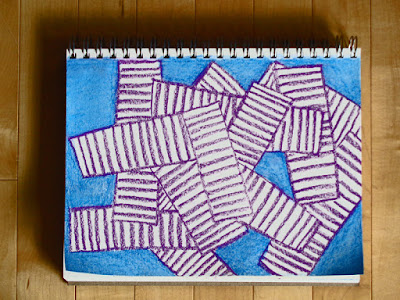My friend is understandably a bit shy about portraits of her & family so I won't post those, but here's a landscape I did from the window of their guest room:
 |
| under drawing with Sharpie marker |
 |
| gone over with watercolour crayons |
Uli and I hit it off right away and had a few hours of great conversation and a lovely meal at her home, before I had to get on a plane. During our brief visit I was able to see some of her paintings. That was a real treat, as I have admired her work for some time, and the actual paintings have even more impact than the images on a screen which first impressed me. Click here to see some of Uli's work.
I also managed to make a couple of super-quick sketches of her and her husband with a perishing Sharpie. An old partly-dried marker is a much more interesting drawing tool than a fresh marker.
Not super-accurate anatomically, but catching a little of the feeling:
I've had my red sketchbook for several years and it has slowly filled up with portraits, maybe 50+ faces painted and drawn with all sorts of materials.
And 3 landscapes. For variety, you know. :)
Not super-accurate anatomically, but catching a little of the feeling:
 |
| Sharpie marker |
 |
| Sharpie marker |
I've had my red sketchbook for several years and it has slowly filled up with portraits, maybe 50+ faces painted and drawn with all sorts of materials.
And 3 landscapes. For variety, you know. :)










